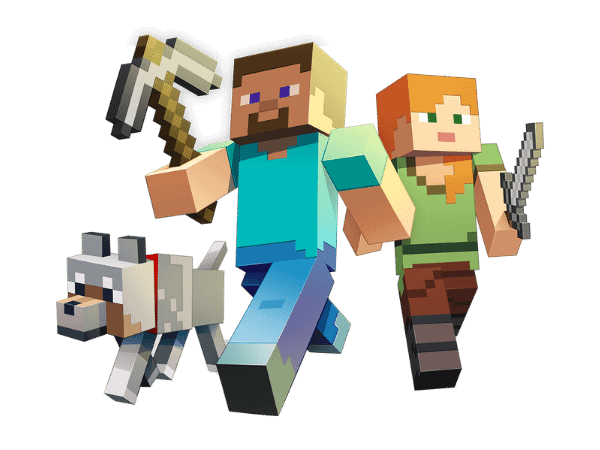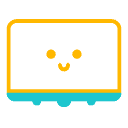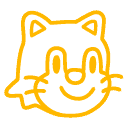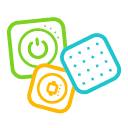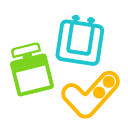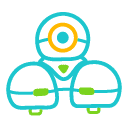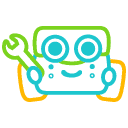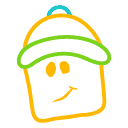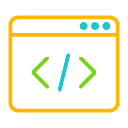Scratch
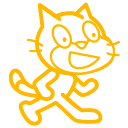
Unleash children's boundless creativity by transforming their imaginative ideas into tangible creations through block-based programming.
Age: 7.5 - 10
P2 - P4
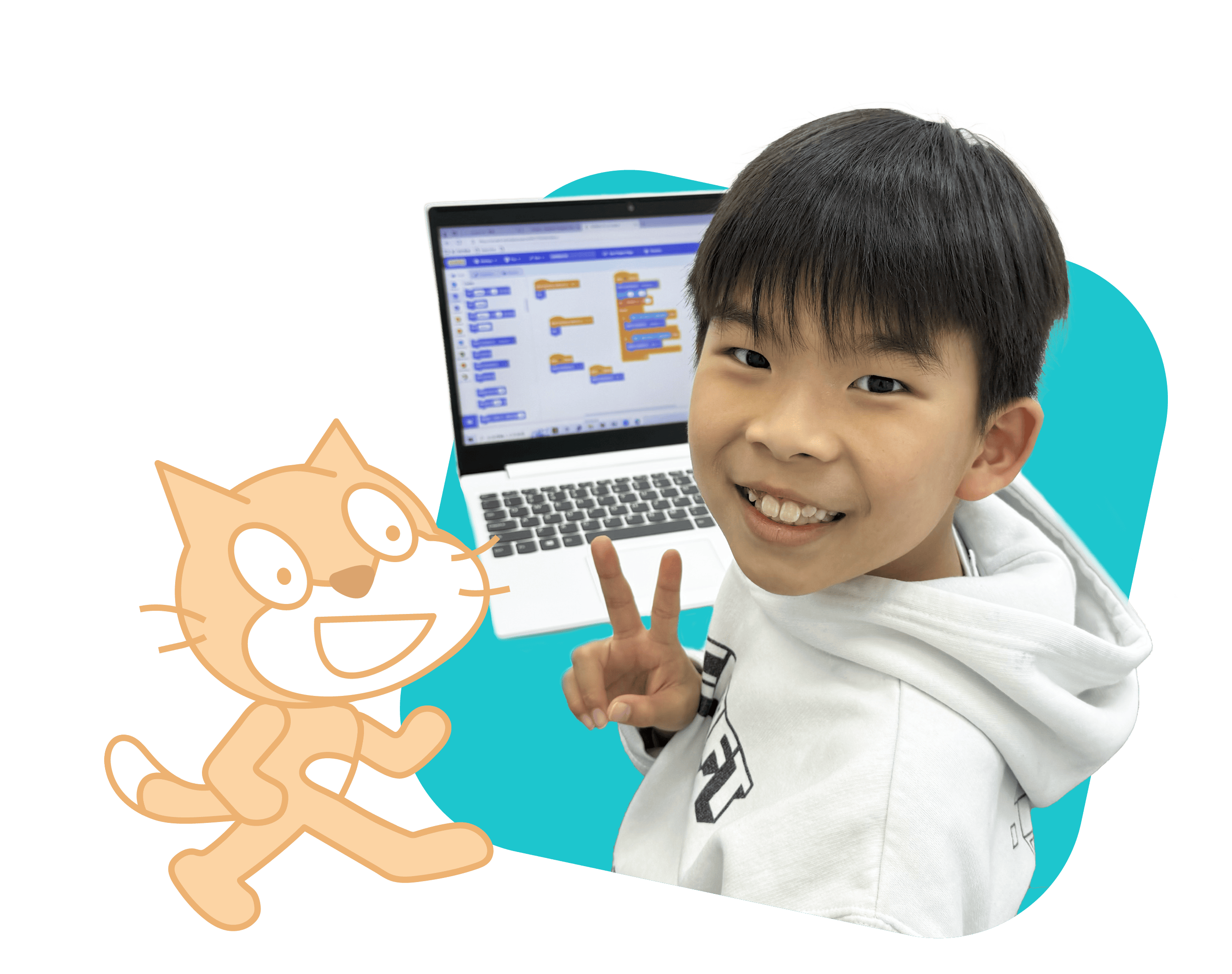
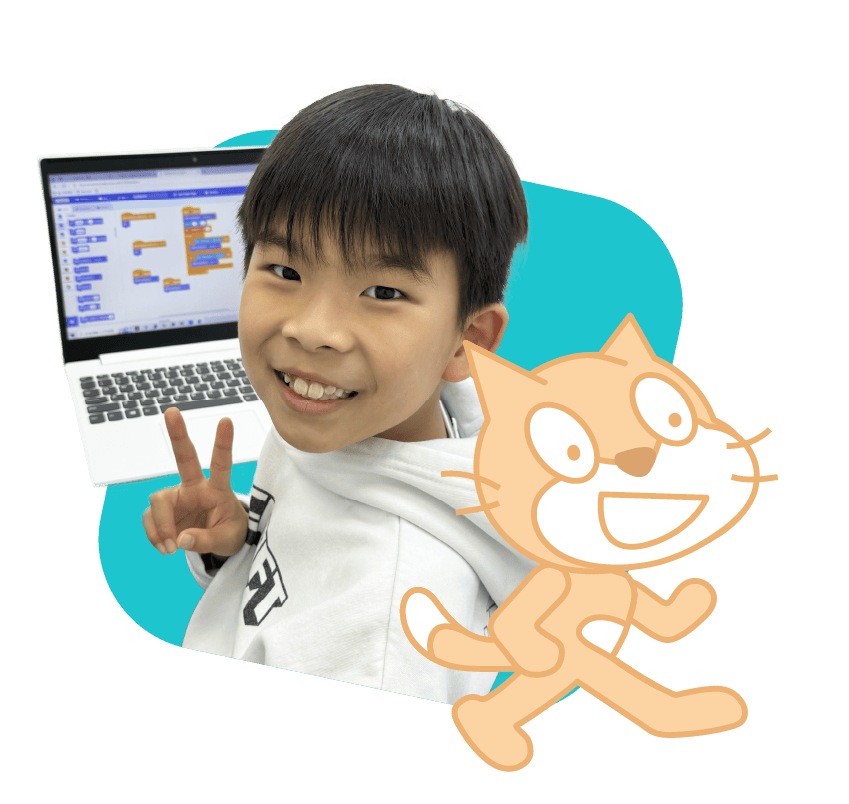
Course Description
Have you ever thought about children becoming game designers, creating all kinds of fun and challenging games? Elementary school children can achieve this dream through RoboCode's Scratch Animation and Game Design course!
Kids will learn how to design game menus, control characters, and develop game play, mastering basic coding concepts while enhancing their problem-solving and critical thinking skills. We not only teach coding-related concepts but also incorporate math and physics elements, allowing children to bring their ideas to life in a variety of real game scenarios. This is a perfect opportunity to open the door to the world of coding for children, letting them learn and grow through games.
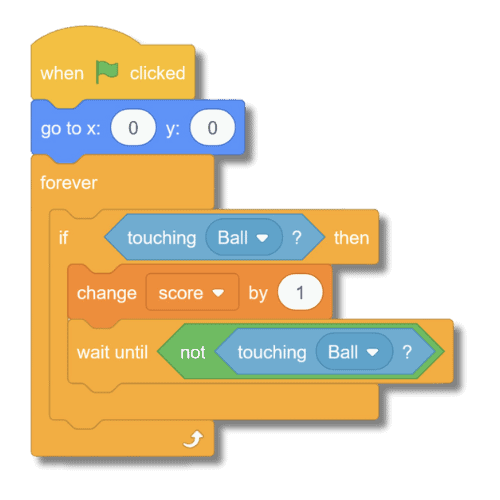
What Will Your Kids Learn?
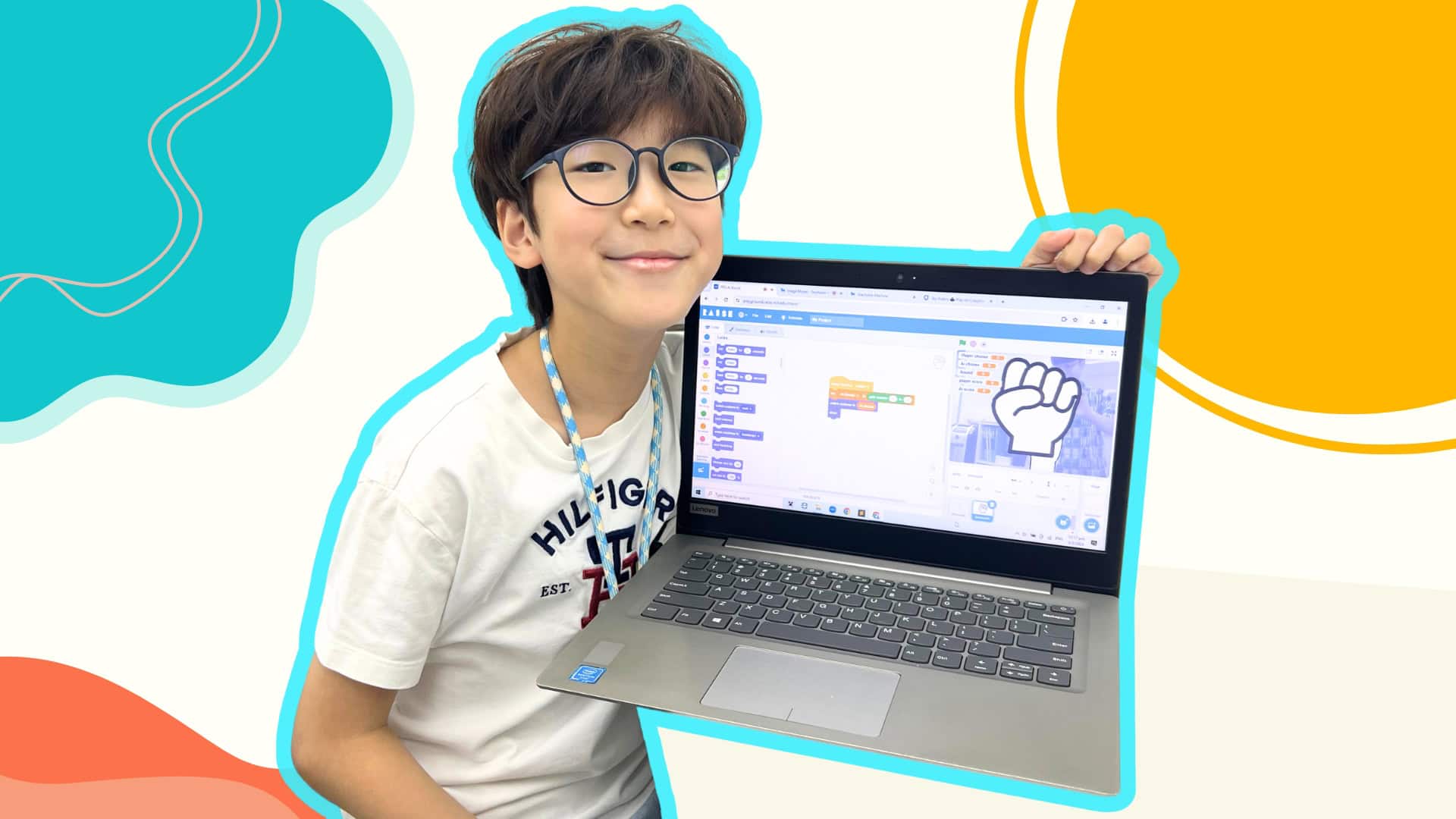
- Start from scratch to build scoring systems and design complete game processes, including initial and end screens
- Learn and apply various math and physics concepts to design projects like jumping dinosaurs and racing games
- Utilize basic artificial intelligence concepts to develop AI applications such as emotion detection games and AR matching games
RoboCode Uniqueness
Creative Application of Skills to Inspire Innovation
The course fosters children's application and practical skills. Each class is designed with specific topics that allow them to flexibly apply what they’ve learned, turning their ideas and creativity into tangible creations.
From Basics to Advanced: In-Depth Exploration of Scratch
The course is structured into five levels, progressively delving into the Scratch platform's applications. From foundational concepts to advanced programming techniques, children learn in a step-by-step manner to master key skills and create various types of projects.
Showcasing Learning Achievements and Enhancing Presentation Skills
Each level includes a presentation session that children explain their acquired knowledge and showcase their projects in front of the camera. Continuous practice helps improve their presentation skills and boost their confidence in public speaking.
Our Curriculum
Level 1 - Introduction to Animation Design and Game Creation
Learn to design basic computer animations, master common Scratch commands, including event-trigger control, character movement, and scene transitions. These elements will also be applied in game design. Children will learn and apply introductory coding concepts, creating multiple complete computer mini-games to improve their coding skills.
- Master basic animation design concepts and understand the application of sequences
- Learn to design various gameplay methods for computer game characters, including keyboard and mouse control methods
- Proficiently use various common Scratch commands to design and complete multiple full mini-games
Level 2 - Integrating Math and Physics to Enhance Game Design
Each class is designed around a specific theme, teaching children to create mini-games with realistic physical effects. This process also tests their observation skills of everyday objects, allowing them to implement these effects in games through coding, adding more variety to their works.
- Learn and apply physical principles through practical examples, integrating them into game design
- Explore various game variations to expand children's perspective on game creation
- Learn to design different game mechanics, such as level systems, to enhance the fun of the games
Level 3 - Advanced Game Development Techniques
Focus on training children to develop large-scale games, incorporating real effects into their projects. Through examples like shooting games, they will solidify their understanding of the cloning concept, further enhancing their coding abilities and skills in creating complex games.
- Handle game data using lists and master advanced coding concepts
- Apply cloning techniques to increase the complexity of games, using shooting games as an example
- Develop classic games, learning to manage the interaction between multiple game characters in various scenes
Level 4 - Comprehensive Platform Game Development
Integrate various Scratch coding techniques and teach children to create advanced physical effects. They will learn classic game mechanics and apply the acquired knowledge to develop a complete platform game, mastering the skills required for large-scale game design.
- Learn frame animation techniques to create smooth character movements in games
- Apply gravity, jumping, and other physical effects in platform game design, integrating past learning
- Develop their first platform game from scratch, mastering large-scale game design skills
Level 5 - Introduction to Artificial Intelligence Concepts
Focus on AI-related projects, allowing children to learn various AI technologies through game creation. This process involves high-level computational thinking, comprehensively training their problem-solving abilities.
- Understand basic machine learning concepts and develop interactive games with real-time player interactions
- Train unique AI models, mastering the training steps and principles of machine learning
- Learn introductory AI algorithms to create the first recommendation system within a game
Suitable for
7.5 to 10 year-old
Every Lesson
90 Minutes
Every Level
12 Lessons
(18 Hours in Total)
Class Size
1:4
(Maximum)
Course Fee
$6840 per Level
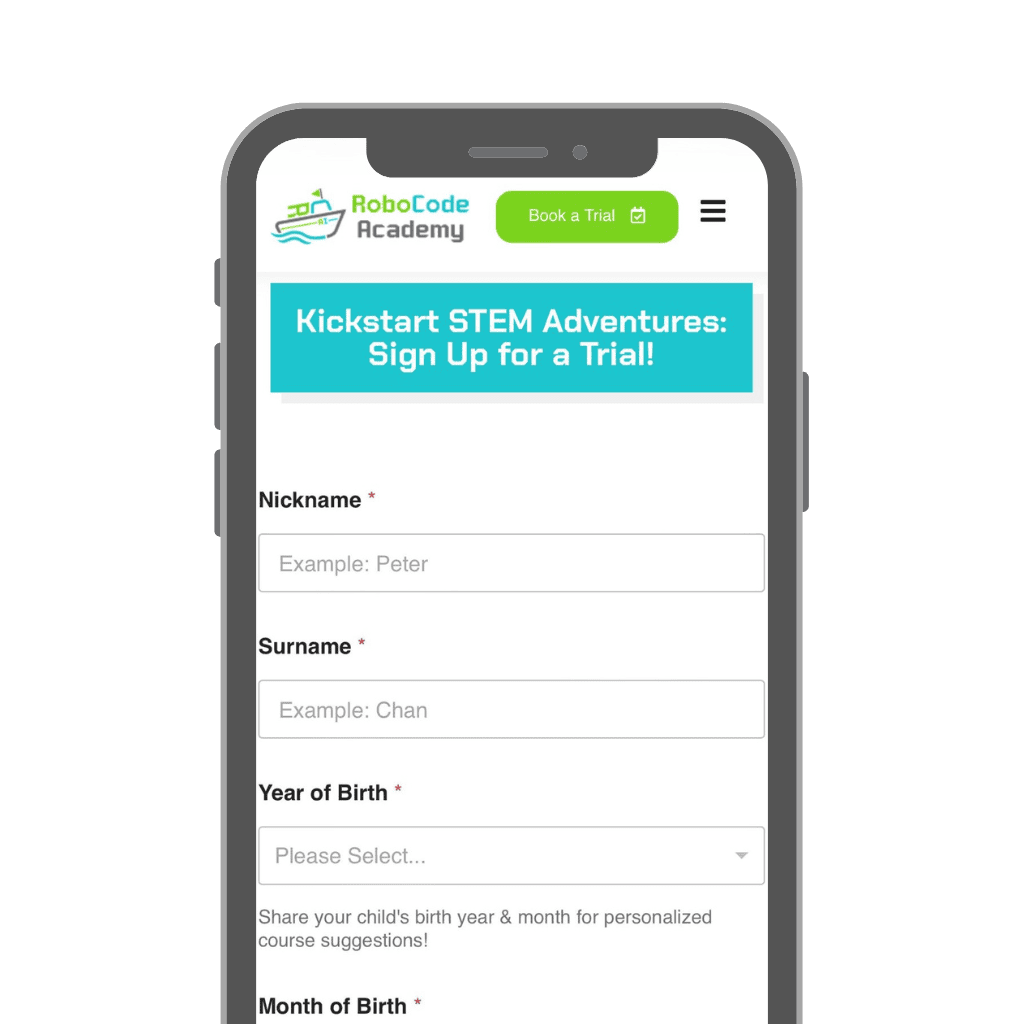
Kickstart Your Child's Journey to Innovation and Discovery
Frequently Asked Questions
Do children need to bring their own computers for classes?
No, we provide each child with a computer and all necessary tools.
Can parents get back children's completed works after class?
Yes, projects completed in class are saved in the child's personal Scratch account, which can be accessed anytime.
Can children practice at home?
Sure, Scratch is a free programming website platform that children can log in to their own account for practice and creation.
Are there any additional fees apart from tuition for the course?
No, only the tuition fee is required; there are no additional charge.
What if children need to take leave?
Parents should notify our staffs in advance. We will then arrange makeup class.
Courses You May Like...

Dash & Dot Robots
Age: 6.5 - 7
Using a multifunctional robot as learning tool, children can grasp coding concepts through various robotic tasks and develop independent thinking and problem-solving abilities.

mBot Robotics
Age: 9 - 11
From daily observations to hands-on practice, let children start with robotics and coding to explore the limitless possibilities of the engineering world.
